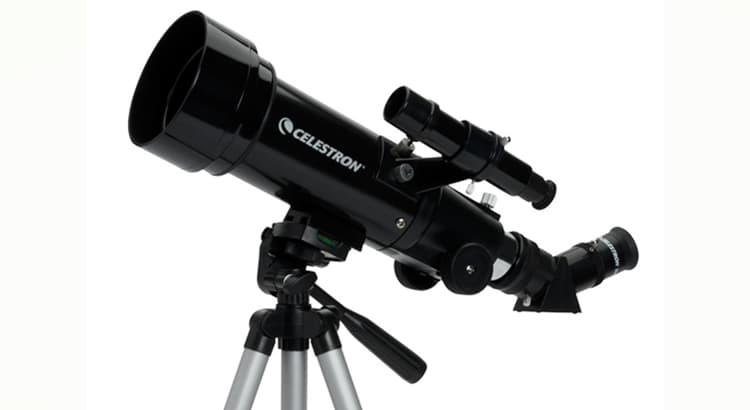Howdy, fellow astronomers and cosmic enthusiasts! If you’ve ever encountered the term “inverted telescope” and found yourself peering through the lens with a sense of cosmic confusion, fear not – you’re not alone.
In this astronomical exploration, we’ll unravel the mysteries surrounding inverted telescopes, diving into the reasons behind their design, the benefits they offer, and how they influence the celestial observing experience.
The Curious Case of Inversion
Let’s kick off our cosmic journey by addressing the fundamental question: What is an inverted telescope? Simply put, an inverted telescope is a telescope that presents an image that appears upside down when viewed through the eyepiece.
This seemingly perplexing characteristic can leave both novice and seasoned astronomers pondering the reasons behind this intentional optical inversion.
Optical Pathways: Understanding the Flip
To comprehend the inverted nature of these telescopes, we need to delve into the optical pathways that light follows within the telescope. In many astronomical telescopes, the use of lenses or mirrors introduces an inversion in the image.
While this might seem counterintuitive from our Earth-centric perspective, it’s a byproduct of the design that optimizes other aspects of the telescope’s performance.
Types of Inverted Telescopes
Inverted views can manifest in various types of telescopes, including refractors, reflectors, and compound telescopes. Each design introduces its unique optical characteristics that influence the orientation of the observed image.
The choice of telescope often depends on factors such as observational preferences, portability, and specific astronomical targets.
Erecting Prisms and Diagonals: The Upright Solution
For those who find the upside-down views disorienting, fear not – solutions abound! Erecting prisms and diagonals are optical accessories that can be added to telescopes to correct the inversion and provide an upright image.
These additions, often called star diagonals, redirect the light path, ensuring a more familiar orientation for observers.
Convenience in the Cosmos
While the inverted nature of telescopic views might seem perplexing at first, it’s essential to recognize that for many astronomers, this orientation is more a matter of convenience than confusion.
In astronomy, the specific orientation of celestial objects is not critical, and observers quickly adapt to the inverted images presented by their telescopes.
Binoculars: Embracing the Flip
Inverted views are not exclusive to telescopes; they also manifest in binoculars. Binoculars designed for astronomy often employ prisms that introduce inversion.
While some astronomical binoculars include erecting prisms, many users become accustomed to the inverted views, appreciating the convenience and wide field of vision that such designs offer.
Educational Considerations: Navigating the Upside-Down Learning Curve
For educators introducing astronomy to students, the inverted views in telescopes can pose a unique challenge. Explaining the discrepancy between what students observe through the eyepiece and their Earth-bound expectations requires additional context and clarification.
However, this educational hurdle is a minor aspect of the broader learning experience in astronomy.
The Cosmic Perspective
In the grand tapestry of the cosmos, the orientation of celestial objects viewed through a telescope is a minor detail.
Astronomers, whether amateurs or professionals, emphasize the awe-inspiring beauty of the night sky and the wonders revealed by their instruments. The inverted views become a small quirk in the grandeur of the cosmic theater.
Aesthetic Appeal
Believe it or not, some astronomers find a certain aesthetic appeal in the inverted views offered by their telescopes. The unique perspective adds a touch of otherworldliness to the experience, enhancing the sense of observing distant celestial realms.
It’s a reminder that the cosmos operates on its terms, often defying our Earthly expectations.
Adapting to Cosmic Quirks
In the world of astronomy, adaptability is a key trait. Whether adapting to the dark of night, unpredictable weather, or the inverted views through telescopes, astronomers develop a resilience that allows them to fully embrace the cosmic experience.
The inverted telescope becomes a unique instrument through which observers connect with the vastness of the universe.
Conclusion
In conclusion, the inverted telescope is a testament to the intricate dance of light and lenses that unfolds within astronomical instruments.
While the upside-down views may perplex newcomers, they quickly become a familiar aspect of the cosmic journey for seasoned astronomers. Whether you’re observing the planets, deep-sky objects, or our moon, the inverted telescope provides a portal to the wonders of the universe.
So, fellow cosmic explorers, embrace the flip, adapt to the quirks, and revel in the celestial wonders revealed through your inverted telescope.
The cosmos invites us to see beyond the orientation of our earthly perspective and witness the beauty of the universe in all its inverted glory. Happy stargazing, and may your cosmic adventures be filled with awe and celestial revelations!





